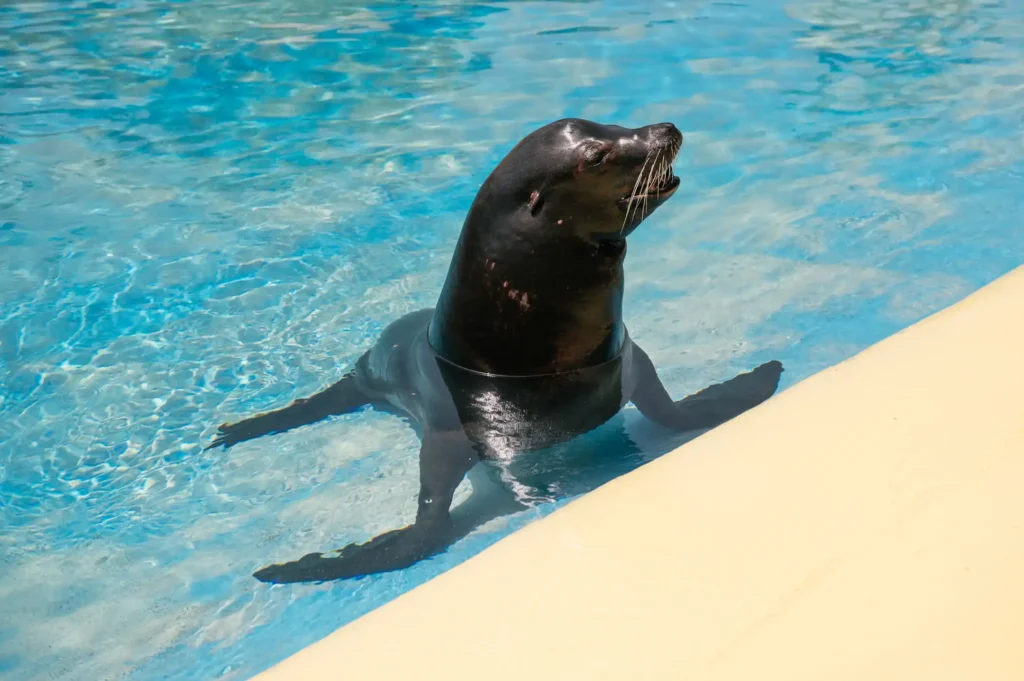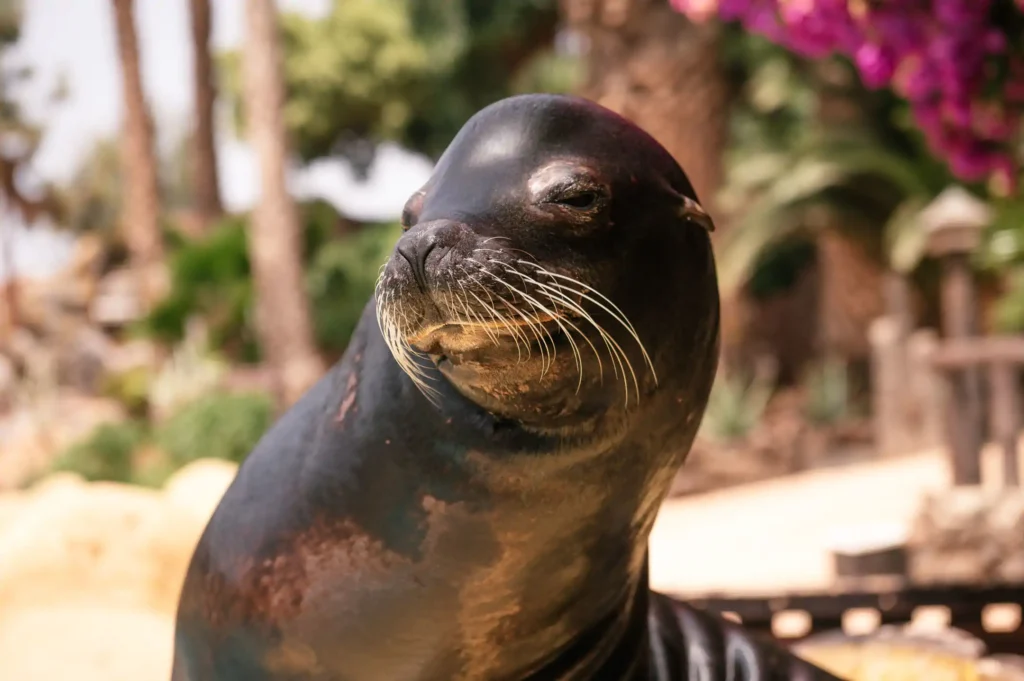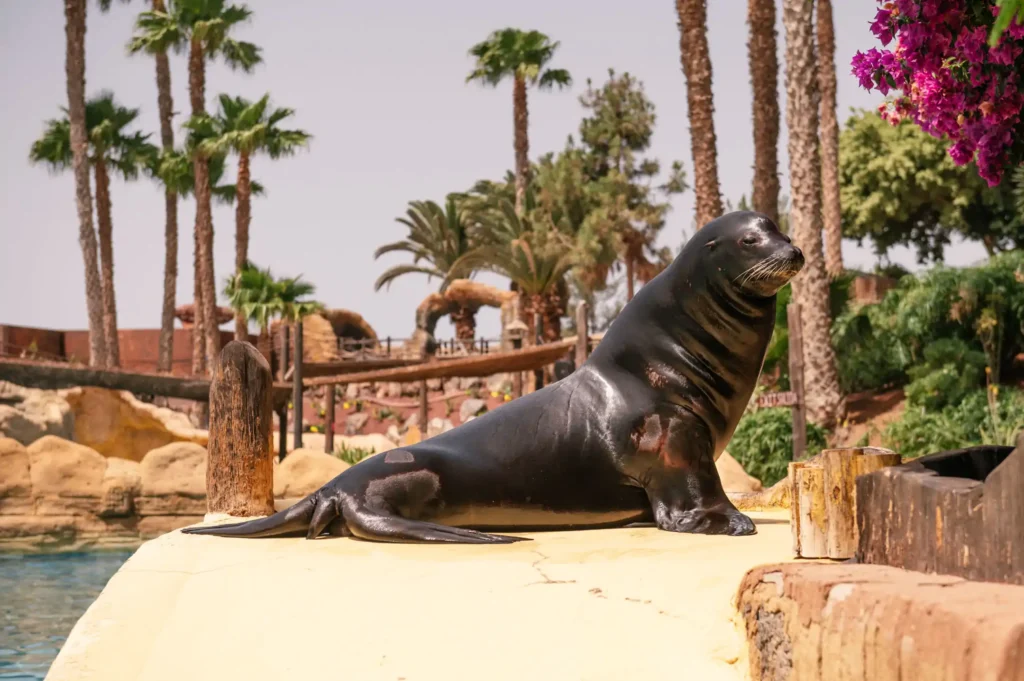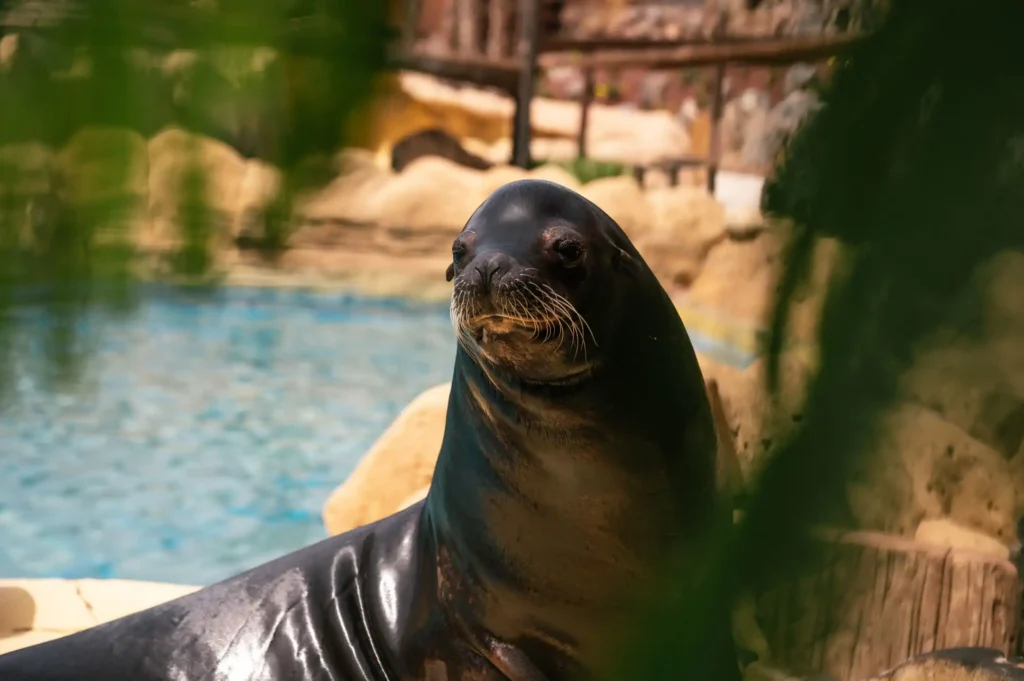California Sea LionZalophus californianus
The California Sea Lion (Zalophus californianus) is a marine mammal. It belongs to the Otariidae family and lives along the coast of the Northern Pacific Ocean. California Sea Lions are highly social and live in large social groups on beaches and rocky coasts, gather at marinas and wharves and may even be seen on navigational buoys. They are good examples for sexual dimorphism. Male California Sea Lions grow to 300 kg – 380kg and 2,4 meters long, while females are significantly smaller, at 90–100kg and 1,80 to 2 meters long. Males grow a large crest of bone on the top of their heads as they reach sexual maturity. Sea Lions, along with other otariids, are possibly the only mammals whose milk does not contain lactose.
California Sea Lions are gregarious animals. They form large social groups which live together in coastal areas, wharves and navigational buoys. The males establish territories and form harems of up to 15 females. They breed around May to June. The females have a 12-month gestation period and give birth around June and August. Mothers may give birth on land or in water. They are possibly the only mammals whose milk does not contain lactose.
As its name suggests, the California Sea Lion is found mainly in the waters of California, but also around the Galapagos Islands. The Zalophus breed from the Channel Islands off Southern California to Mexico, possibly up to the Islas Marías. Some of the islands in the Gulf of California are inhabited by populations of the species, but the major breeding sites are San Miguel and the San Nicolas islands, alongside with other islands in the Pacific coast of Baja California.
After the breeding season, the adult males and juveniles generally leave the western coast of Baja California and the Channel Islands and migrate north for the winter. This migration alongside the central coast and North California hits its peak in September.
California Sea Lion, Zalophus californianus
Facts: How are they? Marine mammals of up to 2,4m of length and 380kg weight. The females are smaller than the males. Females are lighter in colour than the males. When it is dry, the skin of the males is of a chocolate-brown colour. Males grow a large crest of bone on the top of their heads as they reach sexual maturity. Where do they live? In the coastal areas of the Pacific Ocean. How is the species geographically distributed? They live in different coastal habitats alongside the Pacific Ocean from North Guatemala to Canada and the Galapagos Islands. What do they feed on? Squid and fish.




